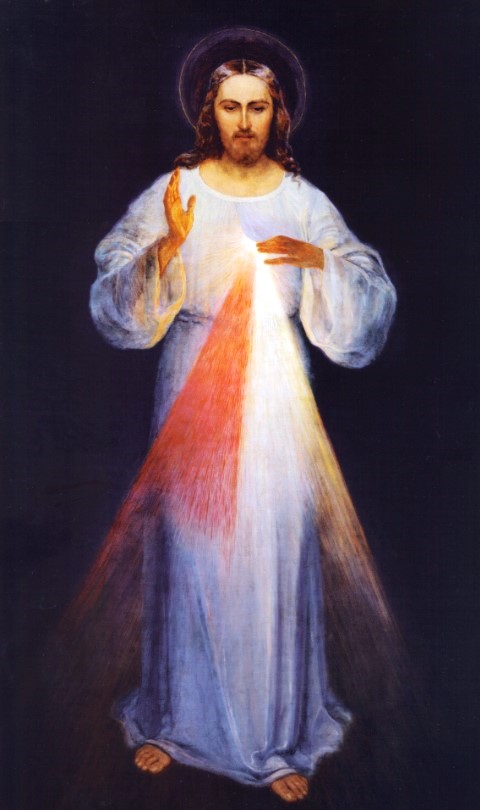Translation of the Gospel According to John
In the evening of that same day, the first day of the week, the doors were closed in the room where the disciples were, for fear of the Jews. Jesus came and stood among them. He said to them, ‘Peace be with you’, and showed them his hands and his side. The disciples were filled with joy when they saw the Lord, and he said to them again, ‘Peace be with you.
‘As the Father sent me, so am I sending you.’
After saying this he breathed on them and said: ‘Receive the Holy Spirit. For those whose sins you forgive, they are forgiven; for those whose sins you retain, they are retained.’
Thomas, called the Twin, who was one of the Twelve, was not with them when Jesus came. When the disciples said, ‘We have seen the Lord’, he answered, ‘Unless I see the holes that the nails made in his hands and can put my finger into the holes they made, and unless I can put my hand into his side, I refuse to believe.’ Eight days later the disciples were in the house again and Thomas was with them. The doors were closed, but Jesus came in and stood among them. ‘Peace be with you’ he said. Then he spoke to Thomas, ‘Put your finger here; look, here are my hands. Give me your hand; put it into my side. Doubt no longer but believe.’ Thomas replied, ‘My Lord and my God!’ Jesus said to him:
‘You believe because you can see me. Happy are those who have not seen and yet believe.’
There were many other signs that Jesus worked and the disciples saw, but they are not recorded in this book. These are recorded so that you may believe that Jesus is the Christ, the Son of God, and that believing this you may have life through his name.
A Message From Pope Benedict’s REGINA CÆLI for the Second Sunday of Easter, 2012
Every year in celebrating Easter we relive the experience of the first disciples of Jesus, the experience of the encounter with him risen: the Gospel of John tells that they saw him appear in their midst in the Upper Room on the evening of the very day of the Resurrection, the first day of the week, and subsequently eight days later (John 20:19, 26). That day, later called “the Lord’s Day”, was the day of the assembly of the Christian community which gathered for its own devotion, that is, to the Eucharist, a new form of worship which from the outset differed from the Judaic worship of the Sabbath. Indeed, the celebration of the Lord’s Day is a very strong proof of Christ’s Resurrection, for only an extraordinary and overwhelming event could have induced the first Christians to begin a form of worship that differed with regard to the Jewish Sabbath.
Then, as today, Christian worship is not only a commemoration of past events nor even a specific, inner mystical experience; rather, it is essentially an encounter with the Risen Lord who lives in the dimension of God beyond time and space, and yet becomes really present amidst the community, speaks to us in the Sacred Scriptures and breaks the bread of eternal life for us.
It is through these signs that we relive what the disciples experienced, that is, the event of seeing Jesus and at the same time of not recognizing him; of touching his body, a real body and yet free from earthly bonds.
What the Gospel says is very important: namely, that Jesus, in his two appearances to the Apostles gathered in the Upper Room, repeats several times the greeting: Peace be with you (John 20:19, 21, 26). Here, the traditional greeting with which people wish one another shalom, peace, becomes something new: it becomes the gift of the peace that Jesus alone can give because it is the fruit of his radical victory over evil.
The “peace” that Jesus gives to his friends is the fruit of the love of God which led him to die on the cross, to pour out all his blood, as a meek and humble lamb full of grace and truth (John 1:14).
For this reason [Saint] John Paul II chose to call this Sunday after Easter, Divine Mercy, with a very specific image: that of Jesus’ pierced side from which blood and water flowed, according to the account of an eyewitness, the Apostle John (cf. John 19:34-37). However Jesus is now risen and the paschal Sacraments of Baptism and the Eucharist flow from him, who is alive: those who receive them with faith receive the gift of eternal life.
Dear brothers and sisters, let us accept the gift of peace which the Risen Jesus offers us, let us allow our hearts to be filled with his mercy! In this way, with the power of the Holy Spirit, the Spirit who raised Christ from the dead, we too can bring these Easter gifts to others. May Mary Most Holy obtain this for us.



